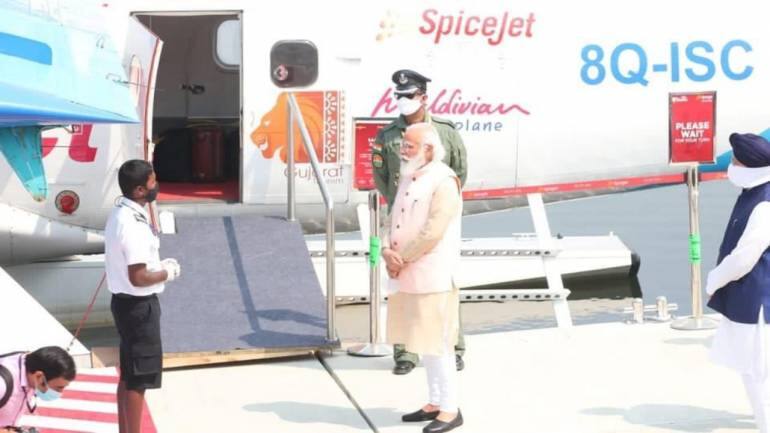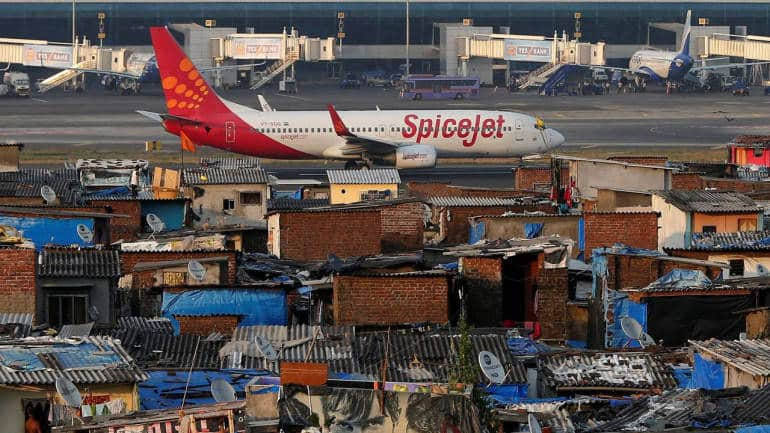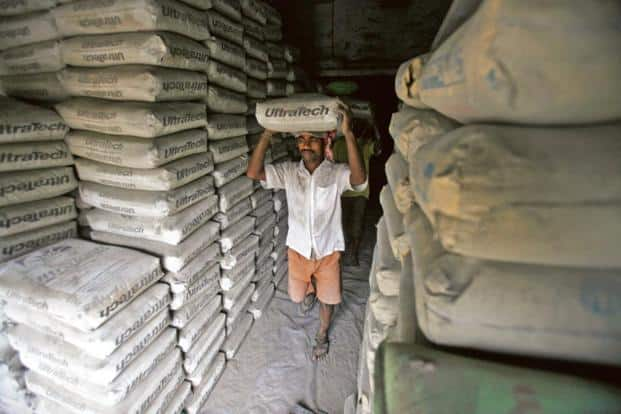Spicejet | In November, the stock price has risen 44 percent to Rs 71.50 as on November 27, 2020 (the last trading day of the month) from Rs 49.60 s on October 30, 2020. However, it traded -40 percent below its 52-week high of Rs 120.
There were few opportunities that 2020, ravaged as it has been by COVID-19, threw up for the Indian aviation sector. But every time it did, SpiceJet was probably the first off the blocks to latch on to it.
On March 25, the nationwide lockdown came into effect, bringing to halt all economic activities, including flight services. Even as its peers seemed to be finding their way out of the woods, the Ajay Singh-led airline became the first to operate a cargo-on-seat flight, on April 7. By then, it had already carried around 1,400 tons of cargo on 200 domestic and international flights, using its dedicated freighter fleet. As the airline made headlines for its several cargo flights, most of them carrying essential goods, its stock rose over 15 percent within a week, much faster than the Sensex.
The same month, the airline also launched SpiceCare, its air ambulance service to cater to urgent medical needs of those unable to travel due to lockdown restrictions.
In July, a little over a month after domestic flights resumed in end-May, SpiceJet was designated as a scheduled carrier to operate services between India and the UK. It got similar rights for flying to the US too.
On August 1, it operated its ‘first wide-body operation’ flying to Amsterdam. A few days later, it got slots in London’s Heathrow Airport. In October, the airline announced plans to become the first low-cost airline from the country to launch non-stop flights to the UK. The snub was on India’s largest low-cost airline IndiGo, which for long had harboured London aspirations, but was yet to start operations.
Through these announcements, SpiceJet’s stock responded positively, most of the time outpacing the Sensex.
Later in October, the airline again made a splash when Prime Minister Narendra Modi inaugurated India’s first seaplane service in Gujarat. SpiceJet’s unit SpiceShuttle won the mandate to fly tourists to the Statue of Unity.
In between these, the airline also took initiatives that may not be strictly aviation. It floated a new vertical, SpiceOxy, which made portable ventilators; became the first airline to launch insurance cover against COVID-19, and also allowed its passengers to book a test for the infection, online. Its latest venture is Spice Pharma Pro, which will transport temperature-sensitive cargo, medicines, blood samples and surely, vaccines.
The flurry of initiatives led to many a question. Was SpiceJet opportunistic, or just street-smart by venturing into businesses to keep the cash flow ticking even as the main passenger business collapsed?
“There is a saying, when life gives you lemons, make lemonade. If there is one airline that has tried everything possible to make lemonade out of a lemon 2020, it is SpiceJet,” says Sanjiv Kapoor, Senior Advisor, Alton Aviation; former COO SpiceJet and CSCO, Vistara.
Kapoor points out how the airline was “quick and aggressive in going after international passenger charter and Vande Bharat Mission business, lobbying the government hard for as much of that business as it could get while others were again slower to react.”
SpiceJet’s cargo vertical was the most dynamic. “The bet it placed on freighters and logistics a couple of years ago paid off handsomely as cargo was one of the bright spots during 2020, with the reduction in belly capacity and strong demand for touchless e-commerce as well as for medical equipment,” adds Kapoor.
The airline’s financial numbers vindicate that. In the second quarter that ended on September 30, revenues from cargo jumped 157 percent year-on-year, to Rs 328 crore. While it couldn’t make up for the lack of numbers from the passenger business, the cargo helped limit the losses to Rs 112 crore, much lower than what analysts across brokerages expected.
The penchant to make news may have also worked. “It’s an important part of a customer-facing business,” says a senior executive from an international brokerage. “So a customer will believe that the airline is doing so many things,” added the senior finance executive, requesting anonymity.
That may have worked in two ways. SpiceJet has led the industry when it comes to filling seats in its flights. Through the COVID-19 months, the airline’s passenger load factor has been higher than peers. In October, show the most recent numbers published by aviation regulator DGCA, SpiceJet had a load factor of 74 percent. In comparison, IndiGo had a load factor of 68.2 percent, Air India 62.1 percent and GoAir had 61.8 percent.
On the stock exchanges, SpiceJet has outshone, both larger peer IndiGo, and the Sensex. While SpiceJet’s shares have shot up by 86.4 percent, as on December 8, over the last six months, IndiGo’s stock has grown less spectacularly at 73.64 percent. Both over shone the Sensex by a mile. The benchmark index went up by 35.99 percent over the six months.
 The seaplane service was operated by SpiceJet's fully-owned subsidiary, Spice Shuttle. Daily two flights were to be operated on the Ahmedabad-Kevadiya route (Image: Twitter/@BJP4Gujarat)
The seaplane service was operated by SpiceJet's fully-owned subsidiary, Spice Shuttle. Daily two flights were to be operated on the Ahmedabad-Kevadiya route (Image: Twitter/@BJP4Gujarat)
The low-cost strategy
In its responses to Moneycontrol’s queries, it was clear that the airline focused on ventures that didn’t involve much of an investment, but could help generate cash, or conserve it.
“Many of our initiatives have helped bring down our costs substantially,” a SpiceJet spokesperson told Moneycontrol. He cited the example of SpiceScreen, the airline’s in-flight entertainment system that was launched in August. Instead of a technology that was licensed from German player, now the airline developed a software with a local startup. The software is loaded in an Android phone, which can be then used as a Wi-FI server and content hub to provide connectivity on-board.
“Our previous solution was costing us about Rs 16 lakh per aircraft per year for the hardware and associated software,” says the spokesperson. “Our current solution only has a one-time cost of two mobile phones (total about Rs 30,000). Each phone weighs less than 200 grams whereas the specialized hardware box from the foreign provider weighed 1 kg each and took up precious space in the overhead bin,” he added. SpiceJet, the executive underlined, was also the first Indian carrier to enable check-in via WhatsApp.
On cargo, much of the investment in warehouses was already done when the vertical was launched in 2018. Now it just needed to convert a commercial passenger aircraft to a cargo plane by removing seats, involving minimal costs. “As for seaplane operations, our cost is limited to wet leasing the aircraft,” the spokesperson said.
These measures and the improving passenger traffic, says the senior finance executive quoted above, may help the airline generate enough cash by March 2021, to cover its costs. “The critical part was surviving the pandemic till September. SpiceJet has managed to do that,” he adds.
 A SpiceJet passenger aircraft taxis on the runway at the airport next to a slum area in Mumbai on December 19, 2014. REUTERS/Shailesh Andrade/File Photo
A SpiceJet passenger aircraft taxis on the runway at the airport next to a slum area in Mumbai on December 19, 2014. REUTERS/Shailesh Andrade/File Photo
The perception dilemma
For most companies these steps would have been enough to win admiration across the board. Not SpiceJet. Despite all these initiatives and managing to hang on despite naysayers, why is it that the airline still has its critics? Is it about SpiceJet’s penchant to make headlines, often putting it on the wrong foot?
For instance, for all its success with the cargo operations, a Moneycontrol report found out that the airline’s wasn’t the largest in the segment as it had claimed. In fact, it was BlueDart that emerged as the biggest air cargo carrier.
“Other than the cargo and charter / VBM business, pretty much all other initiatives it announced or undertook were more publicity stunts or shots-in-the-dark than real value-generating initiatives,” says a senior executive associated with a private airline.
He cited the example of the Amsterdam-Bengaluru flight on August 1, that the airline claimed to be its first wide-body operation. Many disputed it.
“The long-haul wide-body operations seemed to have fizzled out after a few wet-lease charters,” said another aviation executive with experience of working in Europe. He pointed out the “heavily publicised US and UK (Heathrow) flights rights which they got,” but haven’t materialised.
While the London service, which was to start from December 4, has been delayed because of the lockdown announced by the UK government, SpiceJet is waiting to hear from the US Department of Transportation on its proposal to fly cargo and passenger traffic to the country.
The company spokesperson adds:
"Passengers booked on our flights were provided a full refund or a transfer on another airline by SpiceJet at no additional cost. As and when the conditions improve and international travel picks up again, the airline will have a relook at this sector.
"That said, SpiceJet has been operating scheduled one-stop flights to Italy using its A321 Neo aircraft operating to Rome and Bargamo and has operated more than 35 flights till date. Our flights to Italy are being operated on SG call sign. These flights are in addition to more than 30 repatriation charter flights that we operated using a wide-body aircraft helping thousands of Indian nations get back home."
Another big international initiative from the Delhi-based airline was to develop a hub at Ras al Khaimah, part of the UAE. While it now flies to the Emirate twice a week from Delhi, little has been said about its bigger plan to launch an international airline based out of the Ras al Khaimah airport.
“The Emirate is not a big market, and LCCs setting up fifth-freedom hubs in foreign locations is a very hard thing to make work,” said an aviation consultant, who didn’t want to be named.
The SpiceJet spokesperson though reiterated that the Emirate continues to be a big part of the airline's long-term plans.
"SpiceJet has operated more than 600 cargo and passenger flights to RKT in the last six months alone and we recently launched scheduled flights to RKT. The flight ticket also includes free road transportation to Abu Dhabi, Dubai and Sharjah, which are in close proximity and our flights have received a tremendous response. The much lower airport charges at RKT are an added advantage.
"In Ras Al Khaimah alone, we have around 3,300 Indian companies that span across over 50 industry sectors, while the emirate has an ambitious target of attracting 2.9 million overnight visitors by 2025."
While questions may continue to linger, much ridicule has also been directed on its seaplane operations in Gujarat. “Operating a single 50-year-old wet-leased 16-seater seaplane for two flights a day is more of a headache and distraction than an upside opportunity,” says an aviation industry veteran.
SpiceJet had to suspend the service within a month of its launch, with the aircraft sent back to Maldives for maintenance. Executives close to the company, however, also find fault in those responsible to create the infrastructure. “If the docks had been constructed, and should have been constructed by now, the plane won’t have been sent for maintenance outside. The airline had a deadline to work on, and brought the aircraft and operated it. The infrastructure was not the airline’s responsibility,” says a senior executive.
Questions on finance
As much as the airline may have benefited, or not, from its various initiatives, especially the cargo operations, it has also made the most of its hard bargain with lessors and vendors. A report by brokerage Centrum Broking Ltd said that SpiceJet had an outstanding amount of Rs 1,500 crore in deferred payments.
“We estimate the share of deferred payables to have risen from ~Rs 7 billion to ~Rs 16 billion basis the deferment in lease rentals in H1FY21,” Ashish Shah and Vaibhav Shah of Centrum said.
One of those lessors, BOC Aviation and Wilmington Trust Services, sued SpiceJet in a UK court, for $27 million. Without specifically naming the lessor, the SpiceJet spokesperson in reply to Moneycontrol said:
“We have reached out an interim arrangement with a lessor which approached UK courts, post which we have started utilising additional 3 aircraft in our fleet.
“We have agreed deferred payment arrangement with our vendors, lessor and partners and are making payments accordingly as per agreed terms. The same had been stated along with our quarterly results. There has been no default on TDS & GST payments.”
The question now is how long more the airline can keep its lessors and vendors waiting. The airline's net worth, which has been in negative territory for a while, has been eroding fast.
“No one wants an airline to go down. So the lessors and vendors will play ball as long as they see things improving. Everyone has taken that leap of faith,” says Mark Martin of Martin Consulting. “But how long will they keep waiting?” asks the founder of the aviation consulting firm.
That is why the next three months, the last quarter of the 2021 financial year, could be crucial for the airline. It will hope that passenger traffic will reach its pre-COVID-19 levels by March 2021. That will help it start making payments to its vendors and lessors. It's also important to reinstate salaries to employees, including pilots. The Centrum report says that SpiceJet may be able to clear off Rs 600 crore of the deferred payments.
Till then, it will have to keep searching for more opportunities to keep the cash registers going.












_2020091018165303jzv.jpg)






























